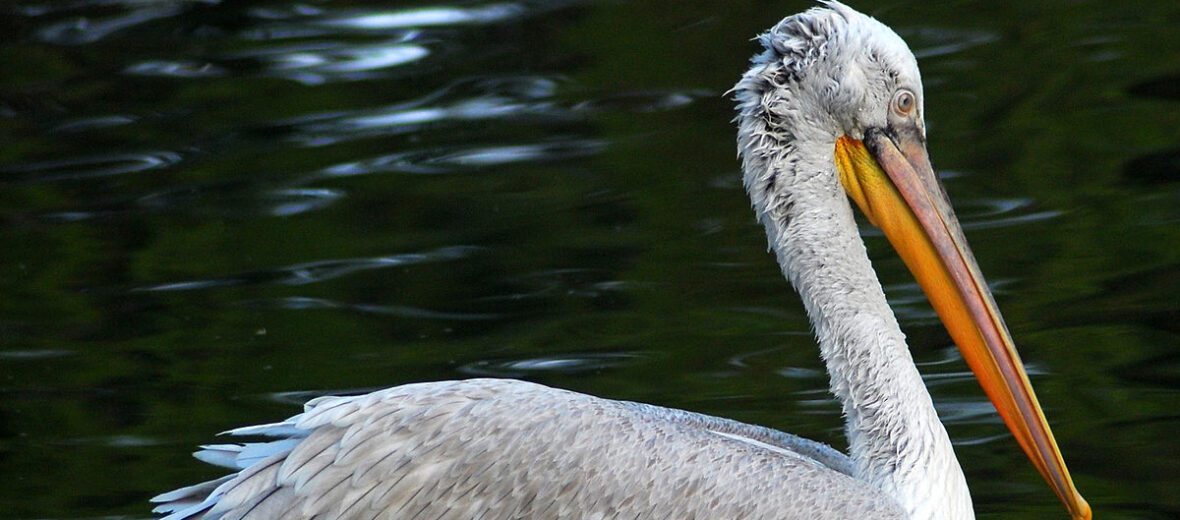
The dalmatian pelican, aka spot-billed pelican, is considered to be 1 of the largest flying birds. These critters can be found from Europe, Africa, the Middle East, and through southern and central Asia. They prefer delta, estuary, lake, and river habitats. Due to habitat destruction at the hands of agriculture, roads, railroads, dams, and renewable energy; hunting; trapping; overfishing; nesting site interference from human-based recreational activities; invasive species (and with them disease, predation, and competition for food); and pollution, these large birds are listed as Near Threatened by the IUCN.
First the Stats…
Scientific name: Pelecanus crispus
Weight: Up to 21 lbs.
Length: Up to 6 feet
Wingspan: Up to 11.6 feet
Lifespan: Up to 54 years
Now on to the Facts!
1.) There were an estimated 13,400 wild individuals remaining as of 2017, and their numbers are decreasing.
2.) Only swans and ultimately, #1, the wandering albatross are considered to be the largest flying birds.
3.) These pelicans are social birds that travel in groups.
4.) Dalmatian pelicans are diurnal (active during the day).
5.) They are persistent groomers that spend much of their waking time splash bathing (diving into the water) and preening their feathers in order to distribute their natural waterproof oil all over themselves.
But wait, there’s more on the dalmatian pelican!
6.) These birds look for fish by either flying above the water and diving in to catch a mouthful of fish, or by swimming slowly and plunging their head into the water to nab an individual or a bunch of fish.
7.) While typically silent, these birds become rather vocal during the mating season, where they’ll produce various barks, grunts, and hisses.
Did you know…?
Pelicans utilize their throat pouch, called a gular pouch, not just to capture food but also as a cooling device. They open their beaks during hot weather and pulsate their pouch in an attempt to speed up the rate of cooling by evaporation.
8.) A group of pelicans is called a pod.
9.) Besides fish, amphibians, small reptiles, and aquatic crustaceans are also on the menu.
10.) Dalmatian pelicans are serially monogamous (form mated pairs with a different partner each season).
But wait, there’s still more on the dalmatian pelican!
11.) Courtship rituals begin shortly after the pelicans return from their migration.
12.) Females lay up to 4 eggs that hatch in up to 31 days.
Did you know…?
The adult’s pouch can hold upwards of 3 gallons of water.
13.) The nest is guarded by both parents.
14.) Chicks, aka nestlings, are independent in up to 90 days.
15.) Coming from an ancient family of birds, pelicans have been around for approximately 40 million years.
But wait, there’s still a little more on the dalmatian pelican!
16.) Chicks and eggs are preyed on by boars, crows, eagles, gulls, foxes, frigatebirds, lynx, skuas, and wolves.
17.) Gulls will sometimes sit on top of a pelican’s head and wait for them to open their mouth to release the water in their pouch. Then the gull will steal a fish, if it can. This is known as kleptoparasitism.
Now a Short Dalmatian Pelican Video!
Be sure to share & comment below! Also, check out the Critter Science YouTube channel. Videos added regularly!
Want to suggest a critter for me to write about? Let me know here.
Some source material acquired from: Wikipedia & IUCN
Photo credit: Shizhao



